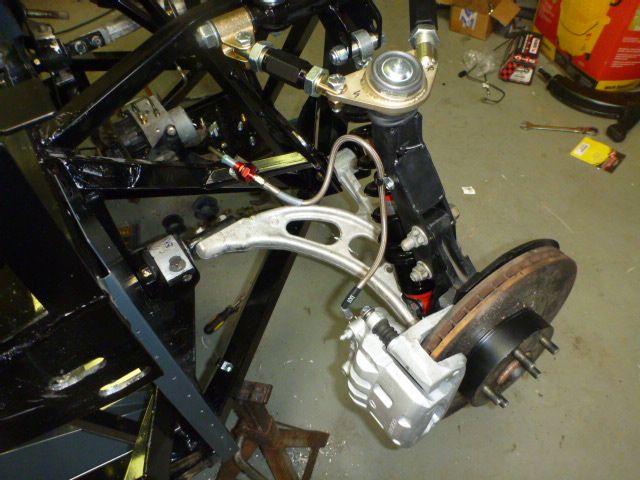fenders in bubble wrap
Update:
1 box left to inventory, no discrepancies so far... Last box is full of laser cut aluminum pieces...
I need to verify all the pre installed aluminum and the body parts too but those are a piece of cake!
I've sorted everything out for powder coating, a friend will powder coat w our in house equip, while waiting he can pre assemble some stuff like shocks, drill LCA for shock mounts and drill brake pedal
Completion of all PC... Saturday?
I'll clean aluminum pieces going on first and apply sharkhide to both sides and get them riveted in this weekend. I want to use all 2 inch spacing. I have an air riveter so it goes fast
My donor suspension pieces are ready to go so as soon as the brackets etc are PC I can install.
should be a busy weekend! Goal: aluminum and suspension done
BTW I just noticed the number of cars in the driveway... Including the 818 there are 3 in the garage... my daughter and my wife were both gone, each in a Miata (green and silver) and 2 cars were out of the frame... AND I was home with no company! No wonder my daughter wants to organize an intervention... I have 2 close friends with more vehicles than me too... (and less drivers as well)
- Home
- Latest Posts!
- Forums
- Blogs
- Vendors
- Forms
-
Links

- Welcomes and Introductions
- Roadster
- Type 65 Coupe
- 33 Hot Rod
- GTM Supercar
- 818
- Challenge Series
- 289 USRCC
- Coyote R&D
- Ask a Factory Five Tech
- Tech Updates
- General Discussions
- Off Topic Discussions
- Eastern Region
- Central Region
- Mountain Region
- Pacific Region
- Canadian Discussions
- Want to buy
- For Sale
- Pay it forward
-
Gallery

- Wiki-Build-Tech


 Thanks:
Thanks:  Likes:
Likes: 



 Reply With Quote
Reply With Quote







